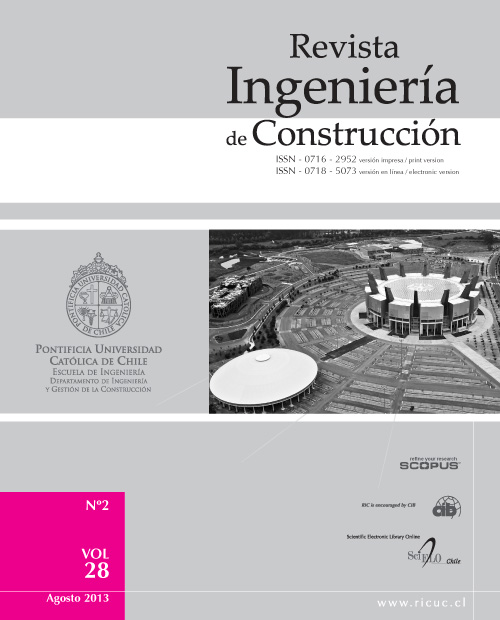Blended cement containing fluid catalytic cracking catalyst residue (FCC): hydration and paste microstructure
DOI:
https://doi.org/10.4067/S0718-50732013000200003Keywords:
Fluid Catalytic Cracking Catalyst, Blended Cement, Hydration Products, Compressive StrengthAbstract
The effect of the incorporation of a petrochemical industry waste, named spent fluid catalytic cracking (FCC) in the hydration process and microstructure of cement paste, was studied. Portland cement (OPC) pastes, with and without addition of meta-kaolin (MK) and silica fume (SF), were used as reference materials. The characterization of the type of hydration products was performed by using X-ray diffraction (XRD), thermo-gravimetric analysis (TG), scanning electron microscopy (SEM) and nuclear magnetic resonance (NMR). This study is complemented with the evaluation of compressive strength of blended cement mortars up to 90 days of curing. The main products of hydration in cement pastes, added with FCC, were calcium silicate hydrate (CSH); calcium aluminate hydrates (CAH) and hydrated calcium aluminosilicates (CASH). The addition of 10% of FCC reports lime consumption from 61% to 360 days of curing; this value is higher than the ones reported by the additions of MK and HS in the same percentage of addition. This indicates a higher reactivity of the FCC, which is manifested even at early ages. It should be noted that, considering the dilution factor, the addition of 10% FCC as cement replacement contributes to the strength of the blended material in the order up to an additional 30%. This is indicative of the potential use of this waste as supplementary material in cementitious mixtures.


